8 medical device companies that beat the COVID-19 pandemic and prospered
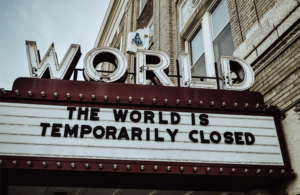 [Image from unsplash.com]
[Image from unsplash.com]
Medical Design & Outsourcing recently analyzed financials for 20 of the largest medical device businesses in the world. Not only was overall revenue slightly down for the 20 during 2020, but it was actually up for eight of them.
For many of the eight companies that saw sales increase, there was a common theme: They pivoted their focus to the diagnostics, imaging and personal protective equipment needed to fight against COVID-19.
“We had different kinds of companies that were able to benefit on some level from COVID and shutdowns,” Richard Newitter, senior research analyst at SVB Leerink, told MDO.
Overall, medtech sales declined in Q1 and Q2 but then bounced back in a V-shaped recovery for the rest of the year, according to Newitter. “It plateaued and actually started to go the other direction into January. Then into January, February and now March, we in the U.S. have hit a stable to improving mode from that slight retracement in December/January.”
Here are 8 large medical businesses that saw revenues grow in 2020.
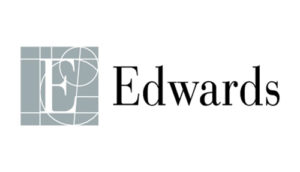 Edwards Lifesciences: +0.9%
Edwards Lifesciences: +0.9%
2020 revenue: $4,386,300,000
R&D spending up 1.1%
Headcount up 6.4%
Edwards Lifesciences represents an exception to the rule. Its structural heart devices often weren’t directly combatting the COVID-19 pandemic, but they were so needed to preserve people’s lives that procedure volumes quickly recovered.
The Irvine, Calif.–based company ended 2020 with $4.386 billion in sales, a 0.9% increase from the year prior when the company made $4.348 billion. Edwards previously grew 16.8% from 2018 to 2019, logging $3.7 billion in sales in 2018.
Edwards LifeSciences paused enrollments in its pivotal mitral, tricuspid trials in response to the COVID-19 pandemic to allow for hospital systems to reallocate resources to potential surges in the coronavirus. Despite the halt, Edwards spent $760.7 million on research and development last year, representing a 1.1% growth from 2019 when it spent $752.7 million on R&D. In comparison, the company’s R&D spending rose 21% from 2018 to 2019 when there wasn’t a global pandemic to contend with.
“Structural heart patients were severely impacted beginning in March, experiencing significant difficulties entering the system, which also had a profound impact on second-quarter procedures, and even though healthcare systems adapted to the challenge, the resurgence of COVID that began late in the year continues to impact structural heart patients, who need care,” CEO Michael Mussallem said during an earnings call transcribed by The Motley Fool. “We continue to invest in developing solutions that extend lives, improve the quality of life and offer greater value for the healthcare system.”
Edwards Lifesciences also employed 900 more people during the year of COVID-19, bringing its total employment to 14,900 to represent a 6.4% year-over-year growth from 2019. The hiring isn’t too far off from how the company trended in the past. Between 2018 and 2019, the company employed 1,200 more people to represent a 9.4% growth in its employee count.
Throughout 2020, Edwards reached numerous regulatory milestones for its TAVR and heart valve technologies. The company won EU approval in May for its Pascal transcatheter valve repair system for tricuspid repair. It also won FDA approval for its Konect Resilia aortic valve conduit for complex aortic valve surgeries.
“We celebrated some exciting milestones in 2020 that directly impacted patients. In TAVR, despite headwinds, more than 100,000 patients benefited from treatment with Sapien valves worldwide. In surgical structural heart, we launched our Konect aortic valved conduit and Inspiris became the leading aortic surgical valve worldwide,” Mussallem said. “We’ve seen early positive clinical evidence across the TMTT platform, physician feedback is encouraging and patient outcomes have been distinguished. And in critical care, we met the increased demand for core pressure monitoring products due to the pandemic, and we’re proud that we were able to help over 1 million patients globally with our monitoring technology.”
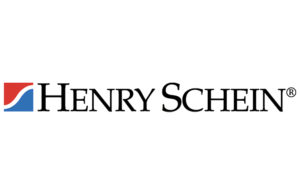
Henry Schein: +1.3%
2020 revenue: $10,119,141,000
No change in headcount
Medical and dental supply company Henry Schein saw increased demand for personal protective equipment and other products needed against COVID-19, which in turn enabled it to end 2020 with sales up slightly.
The Melville, N.Y.–based company previously grew 6.2% from 2018 to 2019.
“Against the backdrop of a most challenging year in our history due to the COVID pandemic, with unprecedented human toll and economic impact worldwide, we were successful in supporting practices that were initially open for emergency services and also assisting customers preparing to restore practices to increased operating capacity as restrictions eased,” CEO Stanley Bergman said in a Q4 earnings call transcribed by The Motley Fool.
Henry Schein’s employee count remained at 19,000 between 2019 and 2020. In comparison, the company employed 18,000 people in 2018, representing a 5.6% growth in headcount when there wasn’t a global pandemic.
To help combat the coronavirus, Henry Schein launched a point-of-care antibody rapid test on March 26, 2020, following an emergency use authorization by the FDA. The antibody rapid blood test, Standard Q COVID-19 IgM/IgG Rapid Test, delivered results within 15 minutes of a pinprick with no other instrumentation required. The company also announced early in the pandemic that it would cut some costs, including payroll. Bergman agreed to a temporary reduction of 100% of his base salary on April 6, 2020, and extended the agreement through its fourth fiscal quarter.
Henry Schein’s medical sales reached $1 billion for the first time during its third quarter after the Centers for Medicare and Medicaid Services lifted some of its guidance on elective procedures. The company cited increased demand for personal protective equipment and COVID-19-related products for driving the 27.8% jump in revenues.
“Over time, our dental and medical customers, we believe, will experience patient traffic that will improve to pre-COVID-19 levels,” Bergman said.
 Royal Philips: +2.1%
Royal Philips: +2.1%
2020 revenue: $22,269,900,000
R&D spending up 3.5%
Headcount up 1.4%
Philips was an early player in the fight against COVID-19 as the U.S. government paid the company to produce ventilators as the country was facing shortages.
The Amsterdam-based company reported $22.3 billion in sales in 2020, representing a 2.1% growth from the year prior when it made $21.8 billion in sales. That growth is not far off from the company’s revenue growth trends from non-pandemic years. Philips made $21.4 billion in sales in 2018 to represent a 1.8% revenue growth between 2018 and 2019.
Philips Healthcare spent $2.2 billion on research and development efforts during the COVID-19 pandemic, a 3.5% growth from 2019 when it spent $2.1 billion. In comparison, the company’s R&D efforts grew 1.4% from 2018 to 2019.
Philips employed 1,097 more people in 2020 for a total of 81,592. It employed 80,495 in 2019, which represents a 1.4% growth in headcount year-over-year. The company grew its employee count by 4% from 2018 to 2019.
“I’m pleased with how we have performed under these challenging circumstances, as our teams remain focused on delivering against what we call the triple duty of care meeting critical customer needs, safeguarding the health and safety of our employees, and ensuring business continuity,” CEO Frans van Houten said in an earnings call transcribed by The Motley Fool.
Philips made a few acquisitions and business moves during 2020. In July, it sold its product portfolio of Electrical Geodesics to Magstim for an undisclosed amount. Philips announced in August that it acquired Intact Vascular for $275 million to strengthen its image-guided therapy business. The biggest financial deal of its fiscal year was the $2.47 billion acquisition of BioTelemetry and its cardiac diagnostics and monitoring technologies for use outside of the hospital.
Philips was also an early player in ventilator production when the U.S. was facing shortages of the life-saving devices during the COVID-19 pandemic. In April, the U.S. government under the Defense Production Act paid Philips $646.7 million to deliver 2,500 ventilators to the Strategic National Stockpile by the end of May last year with a goal of producing 43,000 ventilators by the end of the year.
The company also cleared a number of regulatory hurdles for COVID-19 detection and monitoring technology throughout the year. It won FDA clearance for its ultrasound systems to manage COVID-19-related lung and cardiac complications; won FDA clearance for its wearable biosensor to help manage confirmed and suspected COVID-19 patients in the hospital; received FDA emergency use authorization for its IntelliVue patient monitors and active displays and won FDA approval for its automated external defibrillators.
“The work we are doing to support healthcare providers, medical staff, patients and consumers is our top priority. In close collaboration with our suppliers and partners, we have ramped up the production volumes of products and solutions to help diagnose, treat, monitor and manage COVID-19 patients throughout 2020,” van Houten said. “We have also rapidly responded to the increased demand for telehealth solutions like tele-ICU, teleradiology, telepathology, teledentistry services, which aid virtual working among care professionals as well as move care into the community.”
 Baxter: +2.4%
Baxter: +2.4%
2020 revenue: $11,637,000,000
R&D spending down –12.4%
No change in headcount
Baxter’s revenue increase represents the company’s role during the pandemic as it developed a number of COVID-19 treatment devices for adults and children.
The Deerfield, Ill.-based company reported $11.6 billion in sales in 2020, a 2.4% increase from the year prior when it sold $11.4 billion worth of goods. However, the revenue increase is on trend with the company’s year-over-year performance. In 2018, the company logged $11.1 billion in sales to represent a 2.1% revenue growth from 2018 to 2019.
Baxter spent -12.4% less on research and development during the pandemic compared to 2019. It spent $521 million on R&D in 2020 and $595 million in 2019. The drop in spending isn’t far off from how the company trended in the past. In 2018, it spent $655 million on R&D efforts, representing a -9.2% drop in spending between 2018 and 2019.
Baxter announced in April last year that it was looking to hire 2,000 permanent and temporary workers — including 800 in the U.S. –— to produce more supplies for treating coronavirus patients. The company’s headcount has remained the same since 2018 with 50,000 reported employees in its annual reports.
“This has been a year like no other. And once again, I want to acknowledge healthcare providers, first responders, caregivers, researchers, and of course, patients who are on the front lines of this daily struggle,” CEO José Almeida said in an earnings call transcribed by The Motley Fool. “I’m deeply grateful to my Baxter colleagues who continue to make a difference, not only battling COVID-19 but across all of the acute and chronic conditions addressed by our broad portfolio.”
Throughout the pandemic, Baxter achieved regulatory milestones to help combat the coronavirus. It received FDA emergency use authorization for its Oxiris filter for treating COVID-19 patients and gained EUA for its HF20 Set and ST Set for continuous renal replacement therapy for low-weight patients who can’t tolerate larger extracorporeal circuit volume.
Baxter also won CE mark approval for its Evo IQ syringe infusion system; received FDA clearance for its Altapore Shape bioactive bone graft for bone growth and fusion; won FDA De Novo classification for its Theranova novel dialysis membrane; won FDA clearance for its Homechoice Claria automated peritoneal dialysis system and more.
“In the spirit of our mission, we partnered with three companies to manufacture /portals/16//portals/16/img/ed COVID-19 vaccines through our Baxter BioPharma solutions business,” Almeida said. “We’re privileged to work alongside these companies and proud to bring leading-edge contract manufacturing capabilities to the fight against this pandemic. Our results in 2020 demonstrate our commitment to driving performance and reflect the diversity and durability of our portfolio amid these challenging market conditions.”
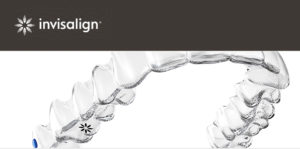 Align Technology: +2.7%
Align Technology: +2.7%
2020 revenue: $2,471,900,000
R&D spending up 11.4%
Headcount up 24.4%
Align Technology saw increased demand for its clear teeth aligners throughout 2020 as people were more reluctant to go to an orthodontist’s office to get traditional teeth braces adjusted.
The San Jose, Calif.–based company reported $2.5 billion in sales in 2020 for a 2.7% growth from 2019 when the company earned $2.4 billion in sales. Align Technology grew 22.4% from 2018 to 2019 when there wasn’t a global pandemic.
The clear aligners company spent $175.3 million on R&D efforts in 2020 and $157.4 million in 2019, representing an 11.4% growth in research and development expenses. In comparison, the company’s R&D expenses grew 22.1% from 2018 to 2019.
Align Technology employed 24.4% more people in 2020 than it did in 2019 for a total of 18,070 reported employees during the COVID-19 pandemic. The spike in employment is on trend with Align’s previous hiring practices. It hired 24.6% more people between 2018 and 2019.
With fewer people making trips to a doctor’s office during the pandemic, Align saw increased demand for its clear teeth aligners that compete against traditional braces, Richard Newitter, senior research analyst at SVB Leerink, told Medical Design & Outsourcing.
“During the year, 30.3% of total Invisalign cases or nearly 500,000 teens or younger started Invisalign treatment. This is up 11.5% from 2019. System and services revenues were down slightly compared to 2019,” CEO Joseph Hogan said during an earnings call transcribed by The Motley Fool.
During the pandemic, Align won FDA 510(k) clearance for its iTero Element 5D imaging system and launched its ClinCheck treatment planning software and Invisalign G8 with SmartForce Aligner Activation.
“2020 was a year unlike any other that we’ve experienced. The COVID-19 pandemic and its impact have been life-changing, marked by loss and separation, recovery and renewal, record highs and lows, and significant milestones and accomplishments. Even in a time of huge disruption, we all had to adapt, evaluate priorities and develop new ways of doing things both personally and professionally,” Hogan said. “Through it all, Align’s priority has been the health and well-being of our employees and their families and our doctors, customers and their staff. And that remains a constant.”
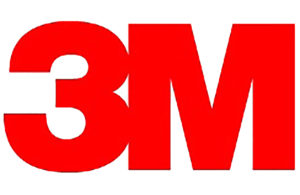 3M Healthcare: +12.3%
3M Healthcare: +12.3%
2020 revenue: $8,345,000,000
No change in headcount
3M’s revenue increase can be partially attributed to its N95 masks, which became one of the most essential types of personal protective equipment for healthcare workers early on in the pandemic.
In 2020, the company reported $8.3 billion in sales, a 12.3% increase from 2019 when it made $7.4 billion in sales. In comparison, the Maplewood, Minn.–based company had a 23.4% increase in sales between 2018 and 2019.
The company reported no new hires or firings during 2020. Its headcount was stagnant at 13,000 employees throughout 2019 and 2020. Despite 3M Healthcare’s headcount remaining the same in its annual report, 3M reportedly laid off 1,700 workers in August as part of its divested drug delivery business. It laid off another 2,900 in December in an ongoing restructuring that would cost the company up to $300 million.
“During the year, we strengthened our healthcare portfolio with the successful integration of Acelity and the completion of the divestiture of drug delivery,” CEO Mike Roman said during an earnings call transcribed by The Motley Fool. “Beginning last January, we immediately activated our surge capacity and doubled our production of respirators to help protect nurses, doctors and first responders.”
At the beginning of the pandemic, some hospitals in the U.S. were running short of 3M’s N95 masks. The company ramped up its face mask production at the end of March to boost N95 mask output by 30% over the next 12 months. At the time, the company reported manufacturing 1.1 billion N95 respirator masks annually with 400 million made in the U.S.
3M also partnered with Ford Motor Co. in March last year to increase the production of its powered air-purifying respirators. The partnership was forged to collaborate on specific means to rapidly combine the manufacturing capabilities of both companies to meet the first COVID-19 surge. 3M also partnered with diesel engine manufacturer Cummins to more than double the production of the PAPRs.
“We have since worked tirelessly to bring on more capacity, which includes additional investments from 3M and partnerships with governments at all levels. In total, last year, we produced and delivered 2 billion respirators globally, with approximately half in the United States,” Roman said. “Today, we are at an annual run rate of 2.5 billion respirators, a fourfold increase versus 2019. At the same time, we have worked closely with governments, law enforcement and retailers to fight fraud.”
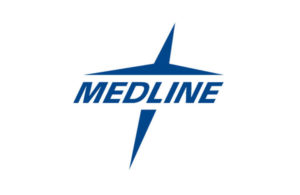 Medline Industries: +25.9%
Medline Industries: +25.9%
2020 revenue: $17,500,000,000
Medical supply manufacturer Medline Industries’ revenue increased in 2020 as it expanded its footprint by nearly 1 million square feet to meet the growing demand for face masks and other essential medical equipment during COVID-19.
The Northfield, Ill.–based company reported $17.5 billion in sales in 2020, a 25.9% increase from 2019 when it made $13.9 billion in sales. In comparison, the company’s revenue increased 18.8% between 2018 and 2019 when there wasn’t a pandemic.
Medline’s headcount has remained the same since 2018 with 27,000 reported employees.
In 2020, Medline Industries expanded its manufacturing operations to support the growing demand for medical supplies. It opened several 1 million ft2 or larger distribution centers in the U.S. — an 820,000 ft2 facility in Uxbridge, Mass., and a 145,000 ft2 facility in Anchorage. Medline also expanded its manufacturing at its Lithia Springs, Ga. plant to produce 36 million face masks per month.
“Throughout the pandemic, Medline has been laser-focused on implementing new ideas to combat the national shortage of medical supplies. In particular, our customers have a critical need for readily available face masks. This is a significant capital investment in one of our largest manufacturing facilities that will increase the number of face masks Medline can offer to healthcare facilities and diversifies our PPE supply chain,” CEO Charlie Mills said in a news release.
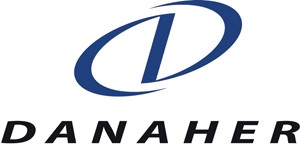 Danaher (life sciences and diagnostics segments): Revenue +33.1%
Danaher (life sciences and diagnostics segments): Revenue +33.1%
2020 revenue: $17,979,000,000
Global sciences and diagnostics company Danaher contributed to the pandemic fight through various treatment, testing and vaccination efforts.
Danaher’s life sciences and diagnostics segments saw the biggest jump in sales in 2020. It reported a 33.1% increase in revenue after $18 billion in sales in 2020 and $13.5 billion in 2019. In comparison, the company’s sales were down -13.2% between 2018 and 2019.
During the pandemic, Danaher purchased GE’s BioPharma business in a $20 billion deal. The company’s subsidiary Cepheid also won FDA emergency use authorization for its Xpert Xpress SARS-CoV-2/Flu/RSV diagnostic test.
And the company had a leadership change in the middle of the pandemic. Rainer Blair was appointed president and CEO in September after his predecessor Thomas Joyce announced his retirement.
“As we all know 2020 was a year that brought many unforeseen challenges, as a result of the COVID-19 pandemic. While our contributions in testing, treatment and vaccination (have) helped with the global effort to combat COVID-19, there is still much more progress to be made to overcome the pandemic. It’s also not lost on us that part of our financial performance in 2020 was driven by the work we’re doing to tackle a health crisis, which has had such a devastating impact on so many around the world,” Blair said in an earnings call transcribed by The Motley Fool.
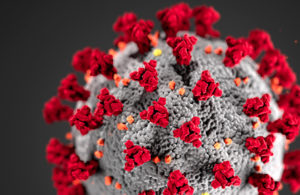 Companies that lost sales
Companies that lost sales
While diagnostics and imaging companies seemingly benefited the most from the COVID-19 pandemic, other elective procedure device companies took revenue hits.
Teleflex
–2.2% lower sales.
5.1% growth in R&D spending.
–2.8% fewer employees.
Intuitive Surgical
–2.7% lower sales.
6.8% growth in R&D spending.
10.3% growth in employees.
Stryker
–3.6% lower sales.
1.3% growth in R&D spending.
7.5% growth in employees.
Abbott (medical device segment)
–3.7% lower sales.
8.3% growth in R&D spending.
Boston Scientific
–7.7% lower sales.
–2.6% lower R&D spending.
5.6% growth in employees.
Owens & Minor
–7.9% lower sales.
GE Healthcare
–9.7% lower sales.
Alcon
–9.9% lower sales.
2.6% growth in R&D spending.
18.3% growth in employees.
Smith+Nephew
–11.2% lower sales.
5.1% growth in R&D spending.
2.9% growth in employees.
Johnson & Johnson (medical device segment)
–11.6% lower sales.
7.2% growth in R&D.
Zimmer Biomet
–12% lower sales.
–17.2% lower R&D spending.
0.5% growth in employees.
Dentsply Sirona
–17.1% lower sales.
–12.4% lower R&D spending.
–1.3% fewer employees.
Article source:Medical Design & Outsourcing By Danielle Kirsh









